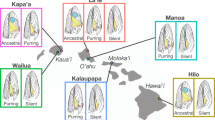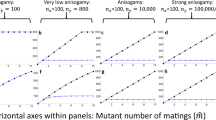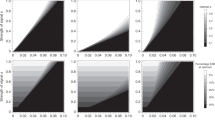Abstract
THE gametes of many lower eukaryotic organisms emit pheromones that attract gametes of the opposite mating type or sex1–4. Gametes move or grow in the direction of the highest pheromone concentration, suggesting that the strength of the pheromonal signal is used to infer proximity, or that the strongest signal is most likely to be noticed. Here I offer a new explanation of pheromonal signalling and chemotaxis in gametes. I show that pheromonal signals can be interpreted as sexually selected traits that honestly advertise variation in quality among gametes, given that signals are costly to produce and that gametes compete; by 'quality' I refer to some aspect of a gamete's fitness. A gamete's preference for a mating partner, then, is predicted to vary with the quality of a prospective partner as inferred from the strength of its signal. This view can explain characteristics of the signalling and mate selection behaviours of gametes that are not predicted by models of mate choice based on proximity or 'passive attraction' to the strongest signal5. These include repeated partner exchanges2, escalated exchanges of mating pheromones6–9, and rejection of gametes that signal at low levels8,9.
This is a preview of subscription content, access via your institution
Access options
Subscribe to this journal
Receive 51 print issues and online access
$199.00 per year
only $3.90 per issue
Buy this article
- Purchase on Springer Link
- Instant access to full article PDF
Prices may be subject to local taxes which are calculated during checkout
Similar content being viewed by others
References
Crandall, M. in Receptors and Recognition Series A (eds Cuatrecasas, P. & Greaves, M. F.) 45–100 (Chapman and Hall, London, 1977).
Wiese, L. & Wiese, W. in Symposia of the Society of Experimental Biology, Cell-Cell Recognition (ed. Curtis, A. S. G.) 83–104 (Cambridge Univ. Press, UK, 1978).
Mascarenhas, J. P. in Receptors and Recognition, Ser. B, Taxis and Behaviour (ed. Hazelbauer, G. L.) 169–204 (Chapman and Hall, London, 1978).
Miller, A. M. Biol. Fertil. 2, 275–337 (1985).
Parker, G. A. in Current problems in Sociobiology 173–201 (Cambridge Univ. Press, UK. 1982).
Cross, F., Hartwell, L. H., Jackson, C. & Konopka, J. B. A. Rev. Cell. Biol. 4, 429–457 (1988).
Hershkowitz, I. Nature 342, 749–757 (1989).
Jackson, C. L. & Hartwell, L. H. Molec. cell. Biol. 10, 2202–2213 (1990).
Jackson, C. L. & Hartwell, L. H. Cell 63, 1039–1051 (1990).
Crandall, M. in Symposia of the Society of Experimental Biology. Cell-Cell Recognition (ed. Curtis, A. S. G.) 105–120 (Cambridge Univ. Press, UK, 1978).
Pommerville, J. Expl Cell Res. 109, 43–51 (1977).
Zahavi, A. J. theor. Biol. 53, 205–214 (1975).
Grafen, A. J. theor. Biol. 144, 517–546 (1990).
Maynard Smith, J. Evolution and the Theory of Games (Cambridge Univ. Press, UK, 1982).
Musgrave, A. & van den Ende, H. Trends biochem. Sci. 12, 470–473 (1987).
Hartig, A., Holly, J., Saari, G. & MacKay, V. L. Molec. cell. Biol. 6, 2106–2114 (1986).
Strazdis, J. R. & MacKay, V. L. Nature 305, 543–545 (1983).
Achstetter, T. Molec. cell. Biol. 9, 4507–4514 (1989).
Anderegg, R. J., Betz, R., Carr, S. A., Crabb, J. W. & Duntze, W. J. biol. Chem. 263, 18236–18240 (1988).
Hagen, D. C. & Sprague, G. F. J. molec. Biol. 178, 835–852 (1984).
Machlis, L. Plant Physiol. 52, 527–530 (1973).
Andersson, M. Evolution 40, 804–816 (1986).
Pomiankowski, A. N. Oxford Surveys Evol. Biol. 5, 136–184 (1988).
Author information
Authors and Affiliations
Rights and permissions
About this article
Cite this article
Pagel, M. Honest signalling among gametes. Nature 363, 539–541 (1993). https://doi.org/10.1038/363539a0
Received:
Accepted:
Issue Date:
DOI: https://doi.org/10.1038/363539a0
This article is cited by
-
Non-random fertilization in mice correlates with the MHC and something else
Heredity (1996)
-
An evolutionary perspective on signaling in behavior and immunology
Naturwissenschaften (1995)
Comments
By submitting a comment you agree to abide by our Terms and Community Guidelines. If you find something abusive or that does not comply with our terms or guidelines please flag it as inappropriate.



